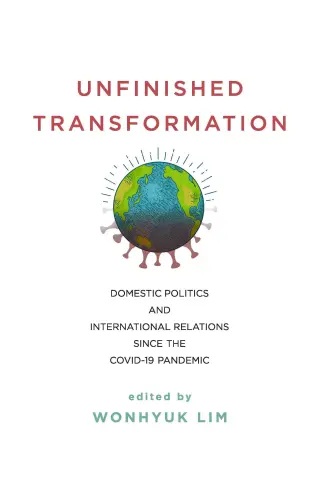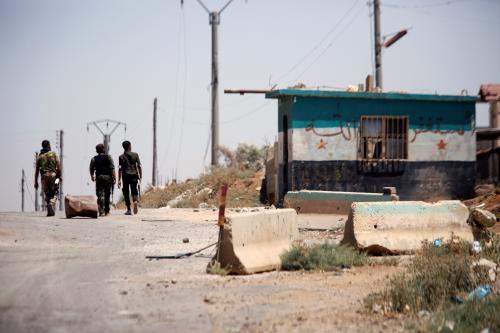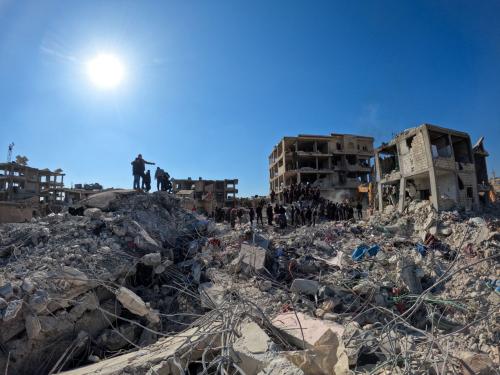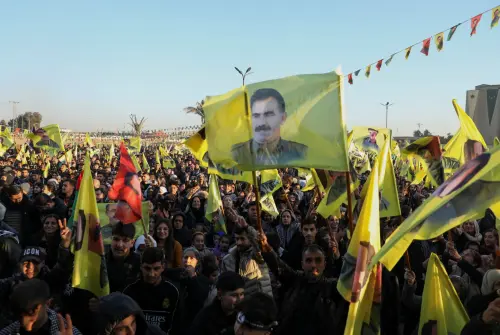Israel will need to create a stable deterrence situation in Syria, writes Daniel Byman. This will mean making Israel’s redlines clear to all actors, including Iran and Russia, and acting forcefully when they are violated. This piece originally appeared on Lawfare.
Israel was dealt a bad hand when it comes to regional security, and Syria is the latest—and trickiest—card in the deck. On the one hand, the weakness of the Bashar al-Assad regime diminishes a leader whose country has never reconciled its past conflicts and territorial disputes with Israel and often proved a remorseless foe. On the other hand, Iran and Hezbollah are exploiting Syria’s instability, and Israelis fear the country will become a new launching pad for Iranian influence and attacks—essentially, another Lebanon. Ehud Yaari, a respected Israeli analyst, describes the risk of war between Iran and Israel in Syria as “almost inevitable.”
The stakes have increased recently. Major powers like Russia have intervened in Syria, and Moscow is providing advanced air-defense systems like the S-300 to the Assad regime, hindering Israel’s freedom of action in the region. The Trump administration also recently announced that U.S. forces would stay in Syria to counter Iranian influence.
Israel’s intelligence services have long studied Syria and know it well. In recent decades Israel has shown that its forces can quickly strike throughout Syria from bases within Israel: The Israeli military struck a suspected Syrian nuclear facility in 2007, repeatedly targeted terrorists like Hezbollah mastermind Imad Mughniyah in Syria, and otherwise felt free to directly intervene to limit any threat emanating from Syria.
Although Israel did not back a faction in Syria when rebellion and then civil war broke out in 2011—fearing chaos and believing a more open intervention could do more harm than good—it did execute more limited interventions that focused on its long-time enemies: Iran and the Lebanese Hezbollah. Tehran considers the Syrian regime a strategic ally and sent several thousand of its own Islamic Revolutionary Guard Corps (IRGC) forces to fight when the regime looked near collapse in the early years of the civil war. However, fearing significant casualties, the IRGC’s role became more limited after the war’s initial years, focusing on leading and directing operations. In May, Israeli intelligence officials claimed Iran had more than 2,000 IRGC forces in Syria, along with up to 8,000 Hezbollah members and 10,000 more Shiite fighters from Pakistan, Iraq and Afghanistan.
Throughout the conflict, Israel has used military strikes and diplomacy to stop the flow of advanced weapons from Syrian and Iranian arsenals to the Lebanese Hezbollah and to keep Iranian and Hezbollah forces far from its border along the Golan Heights. These include over 100 airstrikes on weapons going to Hezbollah, attacks on Iranian arms-production facilities, strikes on IRGC and Hezbollah officers in Syria, and an attack on an Iranian drone facility. (Israel also provided humanitarian aid to Syrians, including through cross-border delivery of food and supplies as well as provision of emergency medical care to Syrians in hospitals within Israel, but this program was suspended after Syria resumed control of the border.)
But Israel’s strategic calculus is changing as the Assad regime steadily triumphs and as Iran’s role in Syria expands. Israel’s defense minister warned in July, “We are not prepared to accept any Iranian presence in Syria.” With a presence in Syria, Iran can increase its threat to Israel and bolster its support for its close ally, the Lebanese Hezbollah. Israelis worry about an Iranian-controlled land bridge that goes from Iran through Iraq and Syria into Lebanon. Israel is adamant on avoiding what it feels are the mistakes of Lebanon, by preventing any lasting Iranian militarization in Syria—a goal shared by Saudi Arabia, the UAE, and other rivals to Tehran.
As the Syrian regime has consolidated its position, so too has Tehran. Iran has bases in Syria and is constructing weapons factories there. Both its officers and its proxies are well-integrated into the Assad regime’s military effort, with both often playing a leading role. Even though it is gradually triumphing in the civil war, the Syrian regime still cannot stand on its own two legs. When Syrian forces moved to take Daraa near the border of the Golan Heights in July 2018, they worked not only with Russia but also with the Lebanese Hezbollah, whose forces both fought the opposition and commanded Syrian regime troops. James Jeffrey, a former U.S. ambassador, noted last October that while the United States may control the air in much of the Middle East, “Iran controls the sand.”
In May 2018, Israel struck 50 airfields, weapons depots, intelligence sites, and other Iranian targets within Syria in Israel’s most extensive military operation in Syria since 1974 and its most significant attack on Iranian targets in Israeli history. It also has struck at Hezbollah and other Iranian proxies operating near the Israeli border. When Tehran has failed when it has tried to fight back. In 2018, Iranian forces fired rockets from Syria into the Israeli-controlled Golan Heights. However, Israeli jets destroyed a rocket launchpad near Damascus, disrupting the retaliation. Most of the rockets that were fired ended up landing in Syria or being intercepted by Israel’s Iron Dome missile-defense system. Iran and Hezbollah, for now, appear to recognize that escalation is a losing game. When helping the Assad regime offensive in Daraa, for example, Hezbollah limited the number of fighters it deployed and did not flaunt its presence.
Russia plays a critical role in Syria as the only state that has good relations with Syria, Iran, and Israel. The Netanyahu government tried to maintain good relations with Moscow—a change from the more frosty relations Israel had with Russia in the past—and urged Putin to restrain Iran in Syria. For now, Russia has tried to push both Iran and Israel to limit clashes and has not used its air defenses to help shoot down Israeli planes (even when Israel attacked Iranian weapons depots near Russian military units). Russia has also brokered a deal to keep Iranian forces 85 kilometers from the Israeli border, excluding Damascus. In September 2018, however, relations became more tense as the Syrian military accidentally downed a Russian plane during an Israeli airstrike, a mistake that Russia blamed on Israel. This prompted the announcement of the S-300 deal and may portend a more hostile relationship between Israel and Moscow.
For now, Israeli raids and defense systems have limited the Iranian threat, but it is not clear how long it will last given that the Syria front is a convenient vector through for Tehran to threaten Israel. Iran can also escalate in other theaters. Iran’s ties to the Houthis in Yemen, for example, enable it to target Israeli shipping in the Red Sea.
International terrorism is also an option for Iran, and it along with Hezbollah use this option when they cannot strike Israel directly. In 2012, Hezbollah bombed an Israeli tourist bus in Bulgaria, killing five Israelis and a Bulgarian bus driver. The attacks, almost certainly at Iran’s direction, were in response to Israel’s assassination of Iranian nuclear scientists. In the 1990s, Iran and Hezbollah worked together to attack Jewish targets in Argentina in response to what they considered Israeli escalation in Lebanon.
Israel will need to create a stable deterrence situation in Syria, ideally better than what exists in Lebanon. This will mean making Israel’s redlines clear to all actors, including Iran and Russia, and acting forcefully when they are violated. The long-term goal would be to drive a wedge between Syria and Iran, making it clear that Syria will pay a price when Iran is too aggressive there. This decoupling is unlikely for now, but it is possible with time as Assad regains his control over Syria and seeks independence from his Iranian overlord.
Washington might also try to stabilize Syria and otherwise be a source of regional stability. The United States should support Israeli redlines and could transfer additional missile-defense systems and technologies to help Israel on its border with Lebanon and Syria. In general, however, the situation will remain unstable: The Trump administration is likely to do little to engage the region while Iran tests Israel’s boundaries, and it will probably take years for a more stable deterrence situation to emerge.
The Brookings Institution is committed to quality, independence, and impact.
We are supported by a diverse array of funders. In line with our values and policies, each Brookings publication represents the sole views of its author(s).









Commentary
Will Israel and Iran go to war in Syria?
October 5, 2018